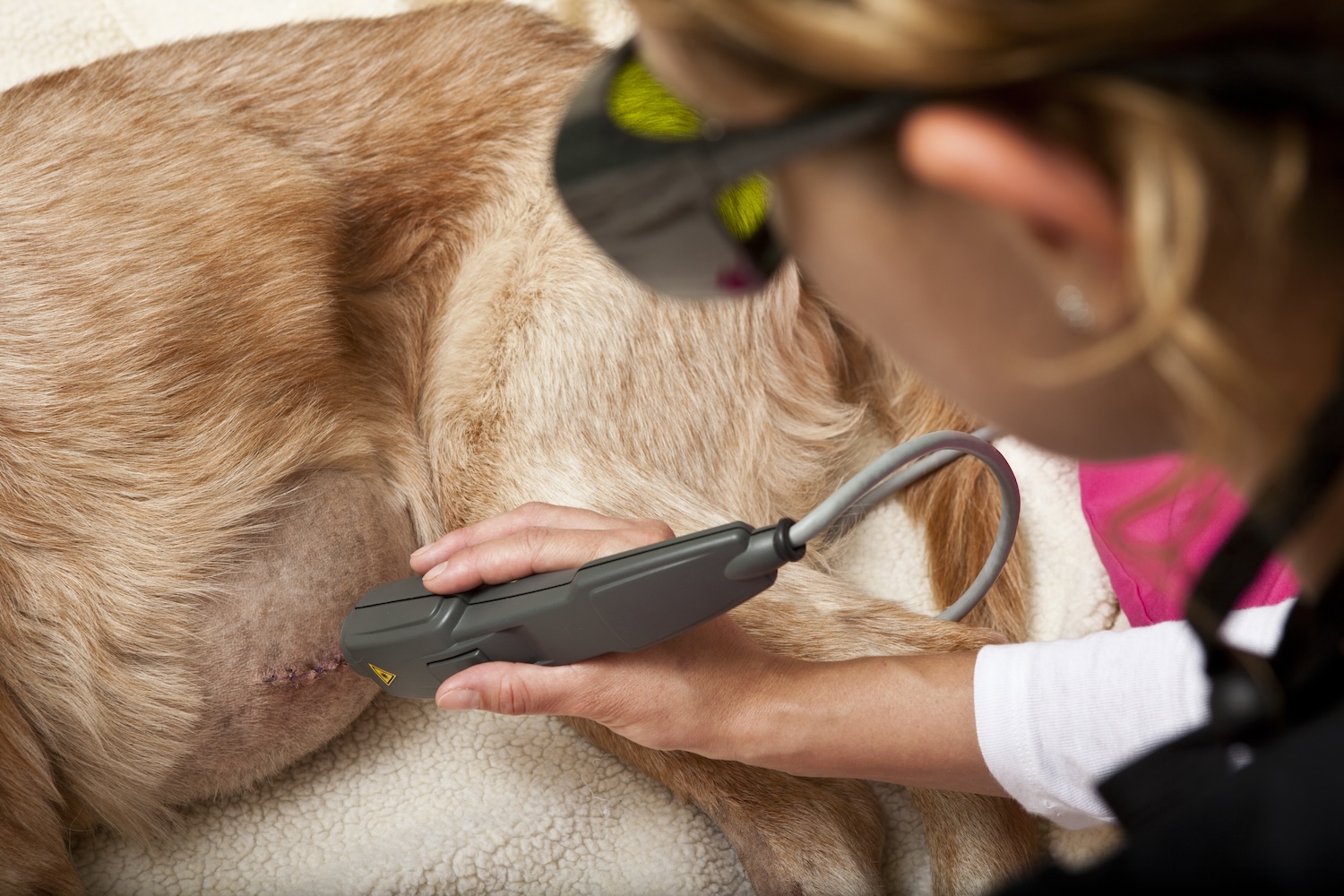Laser Therapy For Pets Brings Gentle, Non-invasive Healing & Relief
Laser therapy for pets is increasingly being used to effectively treat a variety of conditions. In fact, a survey by the American Animal Hospital Association (AAHA) showed that more than 35% of veterinary hospitals in the United States now offer laser therapy, and there’s a good reason for that. Laser therapy is a gentle, non-invasive treatment modality that provides powerful healing benefits.
Laser Therapy For Pets: How Does It Work?
Most people are familiar with laser pointers or lasers that are used in industrial applications. Therapeutic lasers operate on a different wavelength and emit gentle light that is absorbed by cells – which enhances cellular function and promotes healing. The technical name for this process is Photobiomodulation.
Cold lasers promote healing by:
- Releasing endorphins
- Decreasing inflammatory chemicals that can be released by the body in response to injury or trauma to tissue
- Promoting the dilation of lymphatic vessels which helps move fluid out of the traumatized tissue to minimize swelling
- Increasing blood flow to a targeted area of the body to help promote cell growth and regeneration
Laser Therapy for Pets: How Long Has This Technology Been Available?
The use of lasers for healing is a relatively new concept, having been developed mostly in the 1990s and 2000s. Therapeutic lasers started popping up in private veterinary hospitals in the 2010s. Alford Avenue Veterinary Hospital purchased its first laser in 2014, and we quickly realized how valuable of a tool it was. Our first laser patient was a dog named Parker who had a spot on his foot that just refused to heal. After just a few laser sessions, the skin finally healed. Since then, we have used laser therapy on hundreds of patients.
Laser Therapy for Pets: What’s A Typical Treatment Like?
In a pet laser therapy session, the pet lies down on a table in an exam room, or on the floor for larger animals. The laser therapy technician will lightly move the cold laser wand over the pet’s skin in areas where the pet needs healing until the targeted area has been covered. It is a quiet process, and the animals are kept comfortable & relaxed during the sessions with petting and gentle holding. The typical length of a laser therapy session for a pet is 10-30 minutes. Some situations require only one treatment, while other conditions require multiple visits. In addition, laser beams directed at eyes can cause retinal damage, so the pet and the veterinary staff wear protective goggles during the treatment session.
Laser Therapy for Pets: What Conditions Benefit From Laser Therapy?
Cold laser therapy can be used to treat a wide range of conditions, particularly those that involve pain and inflammation. Conditions that respond well to laser therapy include:
Arthritis: Osteoarthritis and rheumatoid arthritis can be managed with laser therapy to reduce pain and inflammation.
Bursitis: Laser therapy is effective in alleviating inflammation of the shoulder, hip, and elbow joints.
Neuropathy: Laser therapy can help manage and reduce pain associated with neuropathy.
Post-surgical Healing: The gentle laser light is effective in speeding the healing of incisions from surgery, as well as reducing pain and inflammation from the surgery procedure.
Sprains and Strains: Laser therapy helps reduce pain from muscle and ligament sprains and promote faster healing.
Tendonitis: Inflammation of tendons typically can be lessened, with pain and swelling reduced.
Wound Healing: Laser therapy can accelerate the healing process of wounds and ulcers.
At Alford Avenue Veterinary Hospital, we have used cold laser therapy to treat arthritis, fresh lacerations, surgical incisions, broken bones, irritated ear canals, anal sac abscesses, wounds that are not healing, and more.
Laser Therapy For Pets: What Animals Are Good Candidates for Pet Laser Therapy?
Any pet that needs healing from an injury, surgery, or chronic condition will likely be a good candidate for laser therapy.
In addition, animals that have sensitivities and can’t take certain medications also are good candidates for laser therapy. For example, it can be very dangerous to medicate dogs with MDR1 genetic mutations – so laser therapy is a drug-free way to address pain and inflammation. For cats, there are only a few pain-control medications for cats, so laser therapy is an excellent alternative or complement.
Senior pets also respond very well to laser therapy. The laser light reaches deep into their tissues, stimulates electrons, and activates cells to promote cell growth and repair.
Laser therapy for pets is a versatile treatment tool that can help pets heal faster from injury, surgery, or chronic conditions. Do your pet a favor and contact Alford Avenue Veterinary Hospital to schedule a laser therapy session today!

